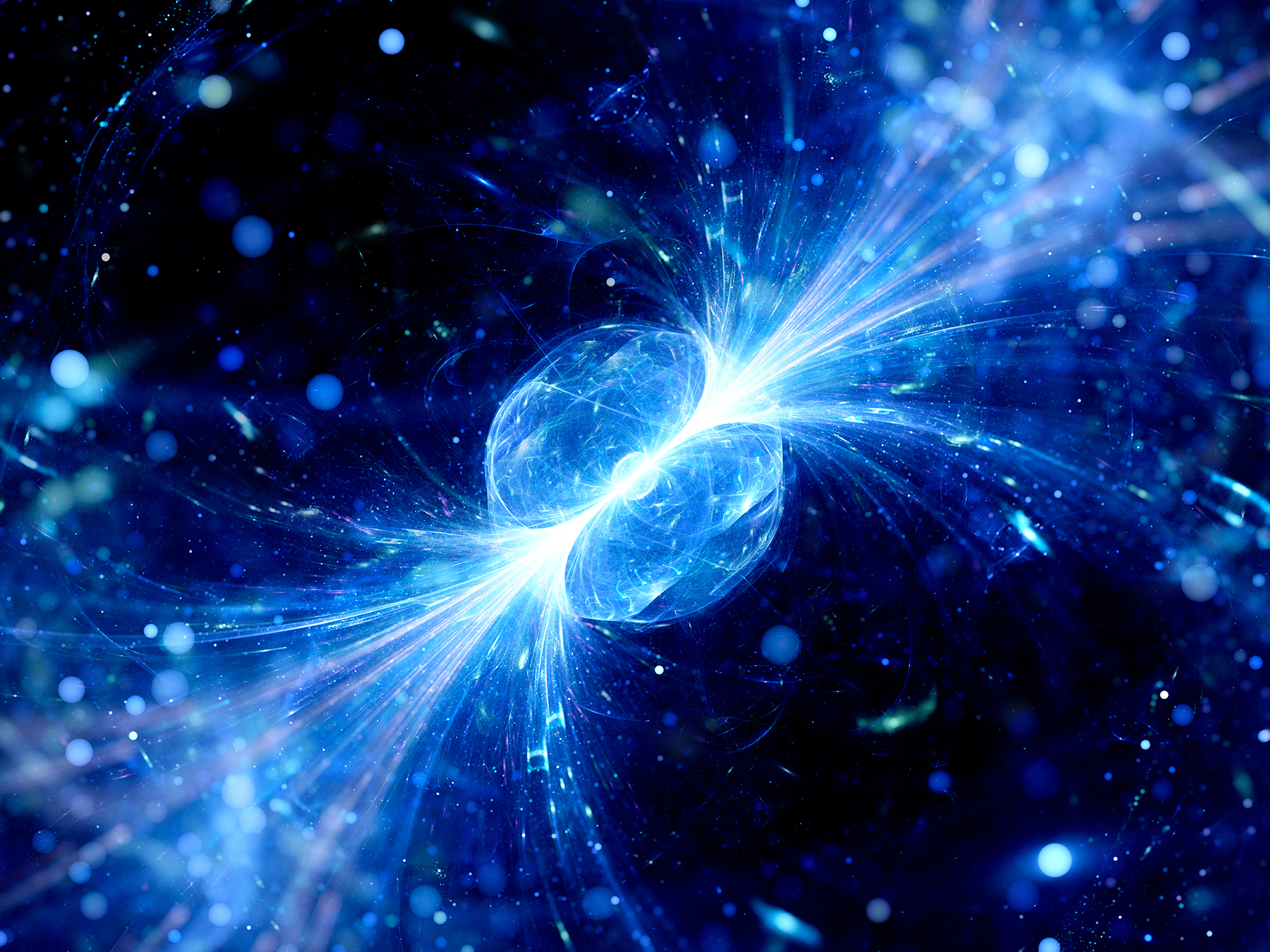Kimberly Mann Bruch, SDSC, contributed to this story.
Gamma-ray bursts (GRBs) are short-lived, with the longest ones lasting only a few minutes. Some are as short as a few milliseconds. But what they lack in lifespans, these showy bursts of gamma-ray light make up for in luminosity. They are incredibly bright phenomena – the most luminous in the universe and a quintillion times as bright as the sun. Short gamma-ray bursts are those that last less than two seconds. These shorter bursts are distinct from their longer counterparts, and there’s a mystery surrounding their creation.
Scientists believe these bursts occur when neutron stars collide. Elias Most, assistant professor of Theoretical Astrophysics at Caltech, is working with a team to help dispel some of the mystery around why these bursts occur. Utilizing ACCESS resource Delta from the National Center for Supercomputing Applications (NCSA), his research team is creating simulations to help prove their theories.

“With the co-incident detection of gravitational waves and a short gamma-ray burst from colliding neutron stars (some of the most extreme objects in the universe, subject to Einstein’s theory of general relativity),” Most said, “we now have firm evidence that many of [the short gamma-ray bursts] originate in such collisions. However, it remained unclear whether they were ultimately sourced from a massive neutron star remnant or a black hole formed in the collision.”
Most goes on to explain the importance of investigating these burst formations. “This has strong implications for our understanding of nuclear physics governing the structure of the star if it were to collapse under its own weight to form a black hole in the collision process,” he said.
With supercomputers like Delta, scientists don’t need to wait until two neutron stars collide to observe and study the reaction. Instead, they can run hundreds of simulations in a short time. Utilizing cyberinfrastructure resources can speed up studies like this, giving results in a far shorter time than using observation of real events when they happen.
“Using numerical relativity simulations on NCSA’s Delta supercomputer,” Most said, “we clarified the launching mechanism of relativistic outflows from neutron star remnants that can ultimately power short gamma-ray bursts. Our findings show that part of the motion of the star can potentially be imprinted in these bursts, although the precise details will need further simulations. This also has implications for certain quasi-periodic oscillations in gamma-ray bursts discovered by NASA scientists earlier this year.”

Resources provided by ACCESS (Delta-CPU) were essential for carrying out this project. Numerical relativity simulations with matter require large amounts of computational time and are run on more than 2,000 compute cores. This work would not have been possible without the continued support of ACCESS and NCSA’s Delta-CPU.
–Elias Most, Theoretical Astrophysics, Caltech
Most’s simulation code is built on top of the Einstein Toolkit simulation framework, co-developed by NCSA Delta Support team member Roland Haas. This combination of compute resource availability and domain-expert support staff accessibility makes Delta an attractive destination for relativistic astrophysics simulations.
Most’s original study has been published in the Astrophysical Journal Letters, with a recent follow-up work on physics aspects of these results being available here.
You can read more about this story here: The Luminous Short Gamma Ray Burst
Project Details
Resource Provider Institution(s): National Center for Supercomputing Applications (NCSA)
Affiliations: Caltech
Funding Agency: NSF
Grant or Allocation Number(s): PHY210074
The science story featured here was enabled by the ACCESS program, which is supported by National Science Foundation grants #2138259, #2138286, #2138307, #2137603, and #2138296.


